
Rosemary wrote her first book when she was ten years old – for her little brother. She also illustrated it herself. It was later rejected by Random House!
She has been writing ever since.
The author of Best Sellers Hollywood Then and Now and Los Angeles Then and Now, English born Rosemary Lord has lived in Hollywood for over 25 years. An actress, a former journalist (interviewing Cary Grant, James Stewart, Tony Hopkins, John Huston amongst others) and a Senior Publicist at Columbia Pictures, she lectures on Hollywood history. Rosemary is currently writing the second in a series of murder mysteries set in the 1920s Jazz Age Hollywood featuring Lottie Topaz, an extra in silent movies.
OH, TO BE IN ENGLAND….
… So begins Robert Browning’s poem Home Thoughts From Abroad. Browning extols the wonders of the English countryside and the changing seasons as Spring emerges.
But it’s not the green fields, buttercups and bluebells that I am missing so much lately – although the thought of those always brightens my heart – but I miss the British magazines that I used to read and, indeed, where I was first published as a writer.
When you’re in the midst of writing a novel and you’re stuck at page 218, knowing you have a hundred or more pages to fill, writing a 1,000-word article for a magazine is most appealing.
But then too, reading a magazine is appealing, when you don’t have the time or the attention-span to devour a lengthy novel. Problem is that today’s magazines seem so frivolous; filled with glaring advertisements and little or no content.
We writers start young as readers. Growing up in England, we had a wide assortment of children’s magazines and comics to choose from: Twinkle, Mandy, Judy and my favorite, Bunty. Then we progressed to Schoolfriend, Girl and eventually Jackie – the teen magazine. I suppose the names are a give-away, that these were for us girls.
 The boys had more serious comics and magazines such as The Boy’s Own Paper, The Beano, The Dandy. I guess adding a “The” made them more weighty. But then what about Buster, Topper and Beezer? Not so serious-sounding now, eh boys? As they got older, the boys progressed to The Eagle, Valiant, Look and Learn and Tiger. The Eagle was my older brother Ted’s favorite.
The boys had more serious comics and magazines such as The Boy’s Own Paper, The Beano, The Dandy. I guess adding a “The” made them more weighty. But then what about Buster, Topper and Beezer? Not so serious-sounding now, eh boys? As they got older, the boys progressed to The Eagle, Valiant, Look and Learn and Tiger. The Eagle was my older brother Ted’s favorite.
The paper-boy would deliver these treasures every Tuesday. They were a main form of entertainment for children until recent years and stemmed from the 19th century “penny-dreadfuls,” that led to the publishing of serial mystery stories such as Arthur Conan Doyle’s Sherlock Holmes exploits. The magazines introduced pirate tales and adventures of such legends as highwayman Dick Turpin and detective Sexton Blake.
Scottish publishing house D.C. Thompson Inc, started The Beano and The Dandy in the 1930s. The Beano is still published today.
The Dundee-based D.C. Thompson was my first publisher, when I wrote articles for My Weekly, People’s Friend and ended up having my own column in Jackie Magazine for several years – including my Letter From Hollywood column, once I moved Stateside. They were the nicest people to work for and My Weekly and People’s Friend are still going strong.
I also wrote a lot of pieces for IPC Magazines in London, for their teen magazines 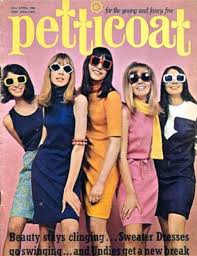 Petticoat, Mirabelle and New Musical Express, as well as the women’s periodicals Woman and Woman’s Own. IPC (International Publishing Corporation) was founded in 1963, but its’ umbrella group goes back to the 1800s and covered the Suffragette Movement, two World Wars, the Swingin’ 60s and today’s revolutions. Taken over by Time Warner in 2001 and renamed Time Inc.UK in 2014, the groups periodicals include Horse and Hound, Woman’s Weekly, InStyle UK, TV Times, Woman, Country Life, Homes and Gardens and seemingly hundreds more.
Petticoat, Mirabelle and New Musical Express, as well as the women’s periodicals Woman and Woman’s Own. IPC (International Publishing Corporation) was founded in 1963, but its’ umbrella group goes back to the 1800s and covered the Suffragette Movement, two World Wars, the Swingin’ 60s and today’s revolutions. Taken over by Time Warner in 2001 and renamed Time Inc.UK in 2014, the groups periodicals include Horse and Hound, Woman’s Weekly, InStyle UK, TV Times, Woman, Country Life, Homes and Gardens and seemingly hundreds more.
But back to the children’s magazines that are so dear to me and others of a certain age. They included cartoon-style comic strip stories, but mostly were filled with how-to articles, history pieces and tales of adventure, romance and mystery – letting imaginations run wild. Yarns of super-heroes, dastardly villains, schoolboys-and-girls-to-the-rescue and hilarious school-days tales of characters like Billy Bunter, filled the boy’s comics. Often very “un-PC” – or un-Politically Correct: Billy Bunter was very overweight and always eating cakes and buns. Not to be outdone, his sister Bessie Bunter turned up in the girls’ magazines, preferring cake to croquet or hockey.
For us girls, there was page after page of “The Secret Adventures of…” – plucky-heroine stories, romantic tales (often nurses falling for doctors), legends, fairy-tales and Cinderella-finds-her-Prince-Charming stories. There was no noticeable class divide, either. We could all dream of being a ballerina, champion jockey, Olympic medalist, a pilot, hospital-matron or doctor – or a princess. There was usually a moral theme to these, where the baddy gets his or her come-uppance and a good deed gets rewarded. Where honesty and loyalty were the benchmarks for everyone. No wonder our generation grew up to be such virtuous, practically-perfect goddesses!
The backdrop for the girls’ tales were often ballet schools, nursing, Boarding Schools, pony-clubs, gymkhanas, ice-skating – and school-holidays in Scotland or England’s West Country: Devon and Cornwall, home of pirates, smugglers, Agatha Christie and cream-teas.
So, as a writer, this was a great market to get started in and learn one’s trade. The money was pitiful – not that it’s much better today. But there were so many magazines that devoured articles and stories every week, that editors would give unknown writers a chance.
Often those short stories developed into books, like the Bunchy, Milly-Molly-Mandy, Marigold books, for readers who grew into Enid Blyton, Noel Streatfield or Nancy Drew fans. My Aunty Marjory gave me Gene Stratton-Porter’s book, A Girl of the Limberlost and Freckles set in the Indiana wetlands. I read Eleanor H. Porter’s Pollyanna, too. (Were they related?) No wonder I ended living in America.
But it wasn’t just the stories we read in those childhood comics and magazines – there were gifts, too, taped to the inside. Perhaps a slim, brightly-colored plastic bangle, a teeny pink lipstick, a plastic ring, a packet of flower seeds for the garden or an envelope of colored sparkly dust for art projects. And the last page of Bunty featured a cut-out doll’s cut-out wardrobe. Such value for money in every edition!
Bunty survived until 2001, Jackie Magazine lasted longer. The Beano lives on.
Today’s magazines for the young seem filled with advertisements and gossip about pop-icons like Justin Bieber. Not quite the same. Where are the fanciful tales for kids today, taking them to other worlds, other planets, even, to get their imaginations stirring? Harry Potter was the exception, of course. But that was a book – not a comic magazine. Hmmm. Thank goodness we had Bunty, Twinkle, Schoolfriend and Judy….
Methinks I’ll stay with my tales of plucky heroines and lonely ballerinas, thank you very much.





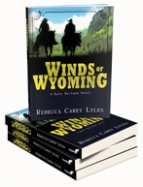 Romantic-suspense, peppered with frank reality
Romantic-suspense, peppered with frank reality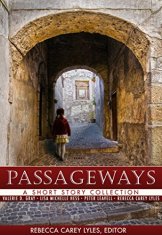 A good story
A good story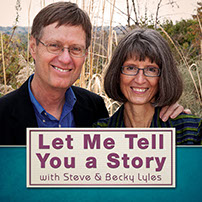 Bio
Bio Freedom from fear and oppression, freedom to live our lives and fulfill our dreams, freedom to write our stories. It’s in our constitution and our patriotic songs. Freedom is a precious commodity still alive (for the most part) in this country. Oh, may we cherish it!
Freedom from fear and oppression, freedom to live our lives and fulfill our dreams, freedom to write our stories. It’s in our constitution and our patriotic songs. Freedom is a precious commodity still alive (for the most part) in this country. Oh, may we cherish it! Words have power.
Words have power.

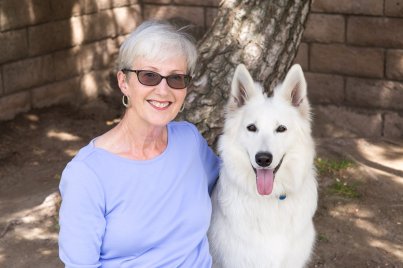
 When I was asked to teach a writing course for Sisters-in-Crime/Los Angeles, I decided I better evaluate how I wrote a story first. I write novels as well as short stories and figured there were similar fundamentals all writers use in both endeavors. Then I remembered the Aristotle course I had taken in college. I still had the textbook, The
When I was asked to teach a writing course for Sisters-in-Crime/Los Angeles, I decided I better evaluate how I wrote a story first. I write novels as well as short stories and figured there were similar fundamentals all writers use in both endeavors. Then I remembered the Aristotle course I had taken in college. I still had the textbook, The  Poetics, so I dusted it off and read the part on the 5 Basic Elements in any story: Plot, Character, Dialogue, Setting, and The Meaning of the story.
Poetics, so I dusted it off and read the part on the 5 Basic Elements in any story: Plot, Character, Dialogue, Setting, and The Meaning of the story. There is another type of timeline I make: A List of Characters. I include their date of birth in case they age throughout the story. You want to make sure you don’t have a character born in 1920 be only fifty in 1990. And you don’t want a character to remember seeing news of the Hindenburg when she was born in 1947. Keep track.
There is another type of timeline I make: A List of Characters. I include their date of birth in case they age throughout the story. You want to make sure you don’t have a character born in 1920 be only fifty in 1990. And you don’t want a character to remember seeing news of the Hindenburg when she was born in 1947. Keep track.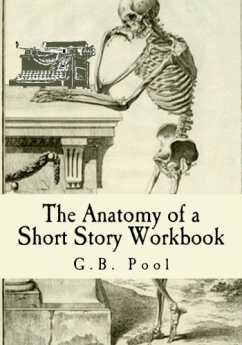 I have put most of my writing course into a book:
I have put most of my writing course into a book:  Chance McCoy was a private detective killed during a routine case, but he is given a second chance to make good. But with his track record as a P.I., he just might blow this chance, too.
Chance McCoy was a private detective killed during a routine case, but he is given a second chance to make good. But with his track record as a P.I., he just might blow this chance, too.
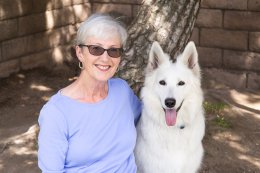
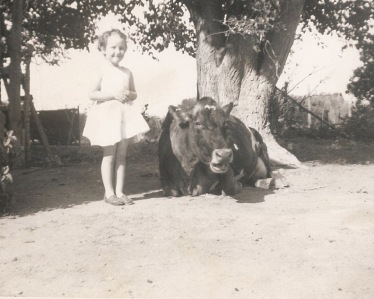
 Linda O. Johnston, a former lawyer who is now a full-time writer, writes two mystery series for
Linda O. Johnston, a former lawyer who is now a full-time writer, writes two mystery series for
You must be logged in to post a comment.